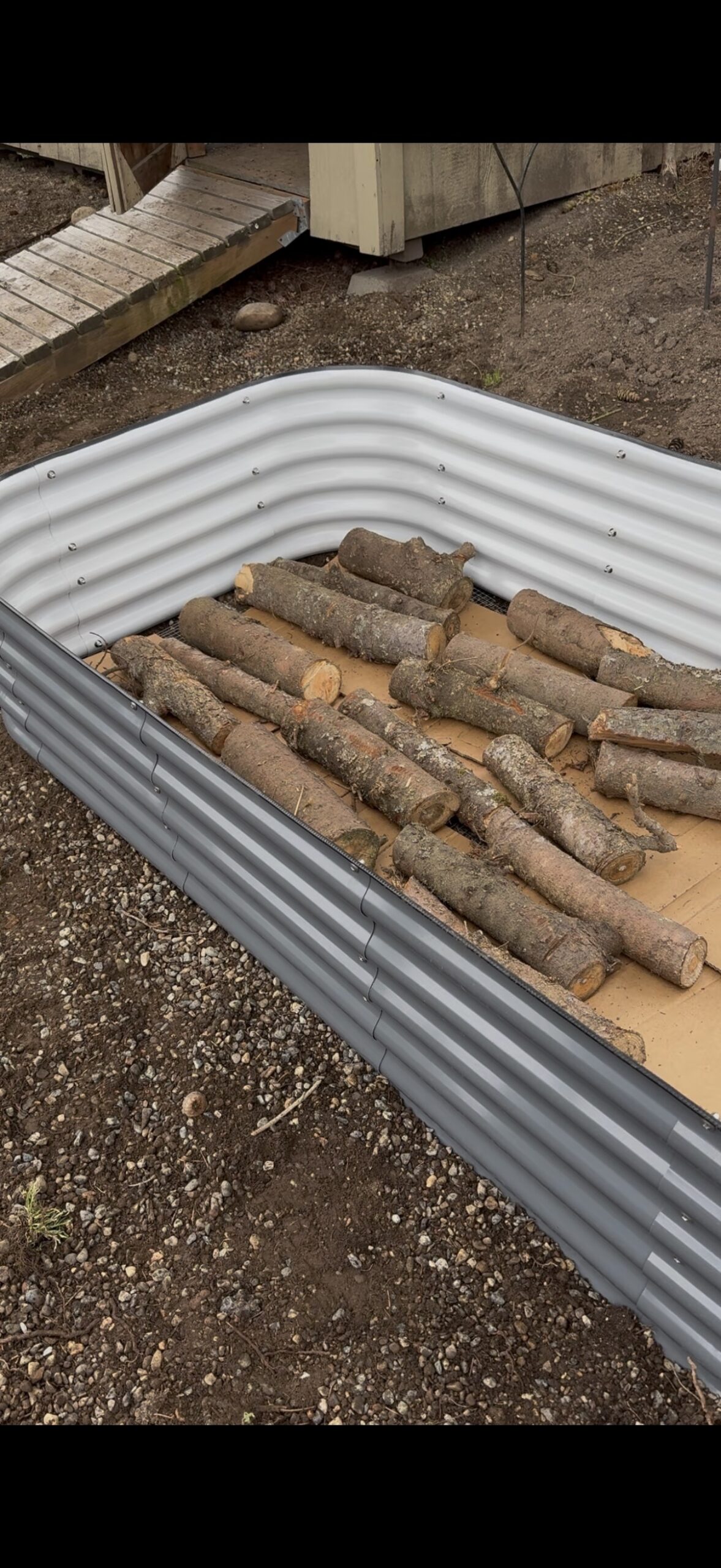Raised garden beds are an excellent way to grow vegetables, offering better drainage, easier access, and improved soil control. To ensure your vegetables thrive, filling the bed with the right materials is essential.
Here’s a step-by-step guide:

Bottom Layer: Start with large organic materials like logs, branches, and sticks. These provide structure, improve drainage, and gradually decompose to enrich the soil over time. This layer also saves money by reducing the amount of soil needed. You’ll read about the benefits of Hugelkultur below.
Middle Layer: Add smaller organic matter such as leaves, straw, grass clippings, cardboard, or shredded paper. These materials will break down faster and contribute nutrients to the soil.

Top Layer: Fill the top 6-12 inches with a mix of high-quality topsoil and compost. A good ratio is 50-60% topsoil and 40-50% compost to create a nutrient-rich environment for vegetable roots. For specialty crops, consider adding soil amendments like acidifiers for blueberries.
This layered approach not only saves costs but also supports long-term soil health by introducing natural decaying processes that enrich the soil.
What are the benefits of Hugelkultur in Raised Beds?

Hugelkultur is a sustainable gardening method that involves layering organic materials like wood at the base of raised beds.
Here are its key benefits:
Water Retention: The wood acts as a sponge, absorbing rainwater and slowly releasing it to plant roots, reducing watering needs over time.
Good Drainage: Organic layers will prevent flooding while maintaining aeration for healthy roots.
Soil Improvement: Decomposing materials enrich the soil with nutrients and promote microbial activity.
Extended Growing Season: Heat generated by decomposing wood warms the soil, allowing earlier planting in spring and prolonged growth in fall.
Cost-Effectiveness: Reduces the amount of purchased soil needed by repurposing organic waste like logs and branches.

Sustainability: Recycles tree waste efficiently while minimizing environmental impact.
By combining hugelkultur principles with traditional raised bed practices, you can create a cost-effective and eco-friendly backyard garden that is full of key nutrients that will support a bountiful harvest.

